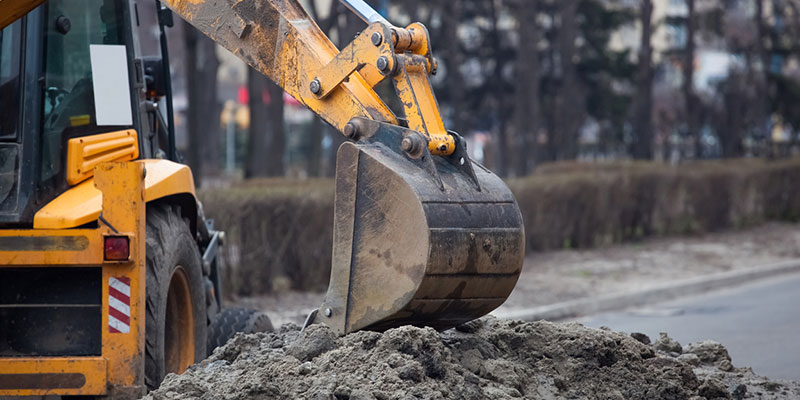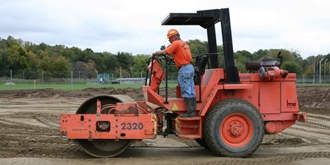Introducing the Art of Excavation: Pro Tips for Safe and Effective Excavating
As dirt is transformed and earth is relocated, the complexities of excavation reveal themselves, demanding a keen understanding of equipment, soil composition, security procedures, and environmental considerations. The expertise required to navigate these elements properly can indicate the distinction between an effective excavation job and a prospective catastrophe.
Relevance of Correct Tools
To make sure the security and efficiency of any excavation task, utilizing the appropriate equipment is paramount. The right tools not just improve performance yet likewise reduce threats connected with digging. Excavation tasks differ in range and intricacy, ranging from small residential landscaping tasks to large-scale building endeavors. Despite the task dimension, having the right tools can make a significant distinction in the end result.
Excavators are basic items of equipment in any type of digging operation. These functional equipments can be found in different sizes to suit different task demands. Mini excavators are excellent for smaller jobs, while larger excavators take on a lot more substantial jobs efficiently. Backhoes are another crucial devices type, combining the functions of a loader and an excavator in one equipment. They are important for jobs needing adaptability and ability to move.
In addition to excavators, various other essential tools includes dump excavators, vehicles, and trenchers. Dump trucks are necessary for getting rid of and transporting excavated materials, while trenchers are used for digging deep and slim trenches. Excavators excel in tasks that require pressing huge amounts of dirt or particles. By buying the ideal devices, excavation projects can be completed securely, on schedule, and with accuracy.
Understanding Soil Composition
A comprehensive understanding of soil composition is fundamental for executing excavation tasks with accuracy and security. Comprehending the various types of dirt is essential as it straight influences excavation techniques, devices option, and general task performance. Dirt make-up usually contains four primary elements: sand, silt, clay, and raw material. Each element has one-of-a-kind residential properties that influence exactly how dirt responds to excavation processes.
Sand particles are the biggest and offer good drain however use little cohesion. Silt bits are smaller sized than sand however larger than clay, providing moderate drainage and communication. Clay bits are the smallest and offer high cohesion but inadequate water drainage. Organic issue, such as decomposing plant material, affects dirt fertility and security.
Prior to starting excavation, conducting dirt tests to identify its composition and characteristics is crucial. This info helps in picking the appropriate devices, applying precaution, and creating excavation approaches tailored to the particular soil conditions - excavating ohio. By comprehending soil make-up, excavation experts can boost task outcomes while guaranteeing safety and security and adherence to finest practices
Precaution and Methods
Comprehending dirt make-up is the keystone upon which safety and security procedures and methods for excavation projects are constructed, ensuring the wellness of workers and the success of the undertaking. There are several key measures that need to be implemented to reduce threats and avoid mishaps. when it comes to safety and security during excavation.
Primarily, prior to any excavating commences, a comprehensive assessment of the site must be conducted to recognize any type of prospective hazards such as underground utilities, unsteady soil conditions, or neighboring structures that could pose a risk. It is critical to have an experienced person supervise the excavation process to ensure that all safety methods are followed purely.
In addition, all employees involved in the excavation should be correctly learnt secure excavating practices and the correct procedure of devices. Personal protective tools (PPE) such as hard hats, high visibility garments, gloves, and safety and security boots must be worn whatsoever times to decrease the risk of injuries. excavating ohio. Routine security conferences and tool kit talks must likewise be conducted to maintain all workers informed concerning prospective risks and strengthen risk-free work techniques. By adhering to these safety actions and procedures, excavation projects can be finished efficiently and without case.
Effective Excavation Preparation
When embarking on an excavation task, precise preparation is crucial to make sure efficiency, safety and security, and successful outcomes. Reliable excavation preparation includes numerous key steps that are important for the smooth implementation of the task.
Once the site assessment is complete, the next step is to create a clear timeline and timetable for the excavation tasks. This consists of identifying the sequence of jobs, devices needs, and workforce appropriation. Correct organizing helps avoid delays and check that makes sure that the task remains on track.

Furthermore, interaction amongst all group participants is vital throughout the preparation stage. Clear regulations, regular updates, and efficient coordination are vital for an effective excavation task. By spending time and initiative in meticulous planning, excavation groups can significantly enhance efficiency, decrease risks, and attain successful outcomes.

Handling Ecological Factors To Consider
With increasing emphasis on ecological sustainability in building and construction techniques, taking care of environmental factors to consider has actually become an important aspect of excavation tasks. Excavation activities have the potential to impact the surrounding environment with dirt erosion, sediment drainage, environment disruption, and contamination of water sources. To mitigate these threats, it is vital to implement ideal methods that prioritize ecological security.

Additionally, proper waste administration is critical to avoid dirt and water contamination. Applying treatments for the disposal of unsafe products, recycling of waste products, and decreasing making use of damaging chemicals can substantially minimize the environmental impact of excavation projects. By incorporating these practices right into excavation preparation and execution, construction firms can make certain that their jobs are not just risk-free and productive however also eco accountable.
Final Thought
Finally, mastering the art of excavation calls for an extensive understanding of appropriate devices, dirt structure, precaution, and effective preparation. By complying with these guidelines and taking into consideration environmental variables, excavations can be carried out safely and successfully. It is important to prioritize safety and security and productivity in every digging task to guarantee effective end results.
As soil is turned and planet is relocated, the complexities content of excavation disclose themselves, requiring a keen understanding of devices, soil make-up, safety and security protocols, and ecological considerations.To make sure the safety and effectiveness of any excavation job, making use of the suitable tools is critical.A detailed understanding of soil composition is essential for carrying out excavation tasks with accuracy and safety. Understanding the different kinds of soil is vital as it directly affects excavation approaches, devices option, and total task efficiency. By understanding soil structure, excavation specialists can boost project results while making certain safety and adherence to best methods.